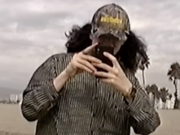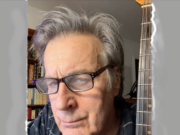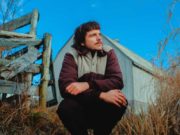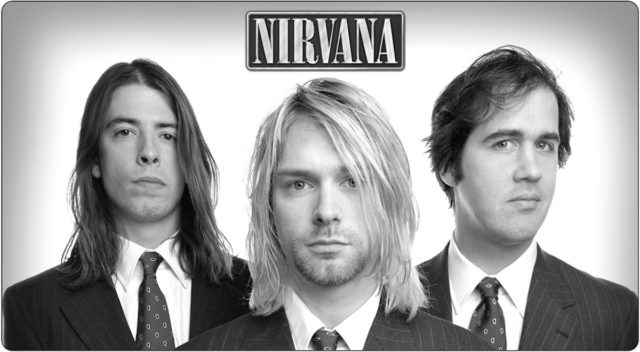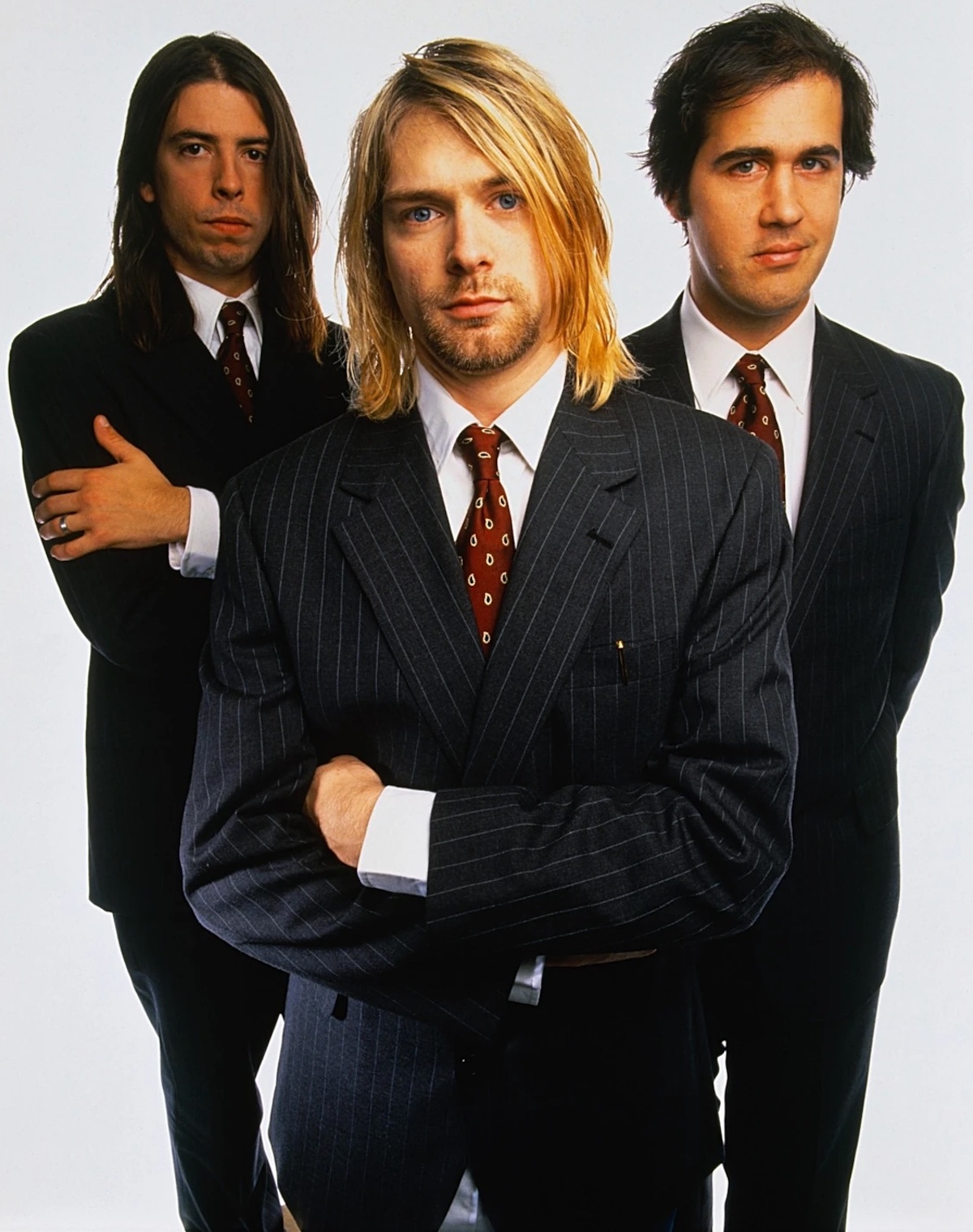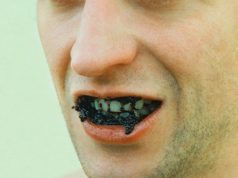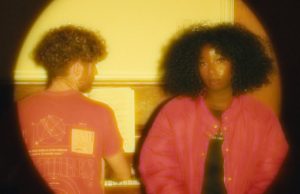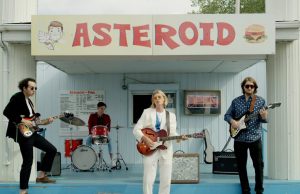This came out in 2004 – or at least that’s when I got it. Here’s what I said about it back then (with some minor editing):
Never mind all the nonsense. Never mind the lawyers, the rumours, the delays, the Courtney Love antics; none of it matters anymore. With The Lights Out, the long-awaited Nirvana box, has finally made it to stores. And even though it’s three years late, fans of these grunge icons will surely believe it was more than worth the wait.
With 81 rare and unreleased cuts — home recordings and studio demos, rehearsals and live recordings, B-sides and outtakes — arranged in roughly chronological order across three CDs and one DVD (along with a sizable booklet with extensive liner notes), With The Lights Out follows Kurt Cobain and Nirvana from their first gig to their final days.
Granted, it’s not a trip for the faint of heart. (You don’t have to be Freud to figure out what lies behind songs like I Hate Myself and I Want to Die.) Nor is it aimed at the Nirvana newbie or fair-weather fan — you have to be a true devotee to put up with the bootleg-quality sound of some tracks. But for those willing to make the journey to the heart of Cobain’s darkness, With The Lights Out presents a treasure trove of significant cuts and historic moments (including footage of the first public performance of Smells Like Teen Spirit). And when set against the sad reality of Cobain’s meteoric rise and tragic fall, it offers not only a compelling alternate history of the band, but also an unspoken commentary on the pressures and perils of fame. Here’s a map to Nirvana:
Disc 1
Tracks: 23
Time: 71:14
Years: 1987 – 1989
Highlights
• Heartbreaker (Live, 1987): “I don’t know how to play it,” claims some bandmember when partiers demand the Led Zeppelin classic. If it’s Kurt making the denial, he’s lying, as he proceeds to rip out a fairly decent off-the-cuff version of the tune, complete with shredding guitar-hero solo. So much for grunge-rock pioneers. As this opening cut — recorded at the band’s first gig in 1987 — makes entertainingly clear, Cobain and co. started out the same way all bands do: Hanging out in the basement playing classic rock covers.
• Mrs. Butterworth (Rehearsal, 1988): Sure, they had garage-band roots, but one thing that set Nirvana apart was how quickly they advanced beyond those humble beginnings. On this early track, the building blocks of their sound — the hypnotic grooves, the pop melodies laid atop arena-sized power chords, the lung-searing vocals — are already beginning to coalesce.
• Beans (Solo Acoustic, undated): A 92-second, helium-voiced soundscape that showcases Cobain’s freakier, more experimental side.
• Token Eastern Song & Even in His Youth (Demos, 1989): A pair of catchy, hard-hitting castoffs that are better than most bands’ A material.
Disc 2
Tracks: 20
Time: 71:20
Years: 1989 – 1992
Highlights
• Opinion (Solo Acoustic, 1990): Kurt gets his Elvis Costello on with this strummy little ditty.
• Pay to Play (Demo, 1990): Noisier and heavier than the Nevermind take (Stay Away).
• Here She Comes Now (Demo, 1990): Nirvana cover The Velvet Underground. Insert your own ironic heroin reference here.
• Aneurysm (Demo, 1990): Maybe the best song that was left off Nevermind, though a later, slightly tamer version ended up on Incesticide.
• Smells Like Teen Spirit (Rehearsal Demo, 1991): An early recording of the song that would change everything. Too bad this tape has more dropouts than an inner-city high school.
• Endless, Nameless (Radio Appearance, 1991): A spine-tinglingly dark, fearsomely heavy, epic-length live version taped for a John Peel show.
• Curmudgeon (B-side, 1992): Rhymes with bludgeon.
• Smells Like Teen Sprit (Butch Vig Mix, 1991): The death knell for ’80s rock. The sound of the alternative hitting the mainstream. The song that launched 1,000 bands. Anyway you slice it, the most important track of a generartion — and Cobain’s commercial peak. Which meant, of course, that he had nowhere to go but down.
Disc 3
Tracks: 18
Time: 73:20
Years: 1992 – 1994
Highlights
• Rape Me (Solo Acoustic & Demo, 1992): A stark homemade take followed by a noisy electric version with the full band, accompanied by crying baby. You can almost feel Cobain’s world beginning to grow darker and smaller.
• Scentless Apprentice (Rehearsal, demo, 1992): Nine cathartic minutes of pummeling rhythm and Kurt’s harrowing, indecipherable bellow.
• Heart Shaped Box (Demo, 1993): Slower, noisier, gnarlier, and darker (“I’ve been locked in heart-shaped coffins for too many weeks”) than the finished version. And more troubling.
• M.V. (Demo, 1993): The M stands for Moist. The V-word rhymes with angina. I’ll let you take it from there.
• Gallons of Rubbing Alcohol Flow Through the Strip & The Other Improv (B-side & Demo, 1993): Kurt rambles and rants over long, uninspired jams. The sound of a great artist unravelling.
• Do Re Mi (Solo Acoustic, 1994): Built around a descending scale, this surprisingly pretty number — heard here in a raw home recording — is supposedly the last song Cobain wrote.
• You Know You’re Right (Solo Acoustic, 1994): Kurt sings “Dream” instead of “Pain” in this home demo of the band’s final completed song. By the time he made it to the studio, the dream was clearly over.
• All Apologies (Solo Acoustic, Undated): The final track. What else could he say?
Disc 4 (DVD)
Tracks: 20
Time: 75:00 (approx.)
Years: 1988 – 1993
Highlights
• About A Girl (Rehearsal, 1988): One of nine songs cranked out during a videotaped rehearsal at Krist Novoselic’s house. Too bad the young, long-haired Kurt spends most of the 25-minute tape facing the wall.
• Love Buzz (Live, 1990): Dave Grohl’s first gig with the band.
• Smells Like Teen Spirit (Live, 1991): Kurt steps up to the microphone, introduces the song — and no one cheers, claps, or even seems to care. Why? Because this is the first time the band played the song in public. Mesmerizing.
• Talk To Me (Live, 1992): The newly minted stars get back to their roots with a surprise performance at a teeny Seattle cafe. “Do you know how much money we have?” Kurt asks fans.
• Seasons In The Sun (Studio, 1993): Kurt is on drums, Dave plays bass and Krist handles the guitar on an impromptu in-studio performance of the Terry Jacks doom-pop chestnut. Sure it’s treacle, but when Kurt sings, “Goodbye my friends, it’s hard to die,” it becomes a moving last testament.









